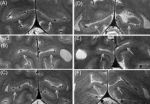(Press-News.org) Tiny metal nanoparticles are used as catalysts in many reactions, from refining chemicals to producing polymers and biofuels. How well these nanoparticles perform as catalysts for these reactions depend on which of their crystal faces are exposed.
But previous attempts to design these nanoparticles by changing their shape have failed because the structures are unstable and will revert back to their equilibrium shape.
Now, researchers at Northwestern University's Institute for Catalysis in Energy Processing have discovered a new strategy for fabricating metal nanoparticles in catalysts that promises to enhance the selectivity and yield for a wide range of structure-sensitive catalytic reactions. The team, led by Laurence D. Marks, professor of materials science and engineering at the McCormick School of Engineering and Applied Science, discovered that they could design nanoparticles by designing the particle's support structure.
"Instead of trying to engineer the nanoparticles, we've engineered the substrate that the nanoparticle sits on," Marks said. "That changes what faces are exposed." Their results were published in February in the journal Nano Letters.
This solution was a bit of a discovery: the team created the nanoparticle samples, discovered that they didn't change their shape (as the laws of thermodynamics caused previously designed nanoparticles to do), then set out figuring how it worked. It turns out that epitaxy — the relationship between the position of the atoms in the nanoparticle and the position of the atoms on the substrate — was more important to design than previously thought.
The team is currently testing the nanoparticles in a catalytic reactor, and early results look promising, Marks says. The nanoparticles appear to be stable enough to survive the rigors of long-term use as catalysts.
"It opens the door to designing better catalysts," Marks said. "This method could be used with a variety of different metal nanoparticles. It's a new strategy, and it could have a very big impact."
###
The Nano Letters paper is titled "Oriented Catalytic Platinum Nanoparticles on High Surface Area Strontium Titanate Nanocuboids." The authors of the paper are James A. Enterkin (first author), Kenneth R. Poeppelmeier and Laurence D. Marks from Northwestern.
The Northwestern University Institute for Catalysis in Energy Processing, funded through the US Department of Energy, Office of Basic Energy Science, supported the research.
Researchers discover new way to design metal nanoparticle catalysts
2011-02-24
ELSE PRESS RELEASES FROM THIS DATE:
Crying baby draws blunted response in depressed mom's brain
2011-02-24
EUGENE, Ore. -- Mothers who are depressed respond differently to their crying babies than do non-depressed moms. In fact, their reaction, according to brain scans at the University of Oregon, is much more muted than the robust brain activity in non-depressed moms.
An infant crying is normal, but how mothers respond can affect a child's development, says Jennifer C. Ablow, professor of psychology. For years, Ablow has studied the relationship of behavior and physiological responses such as heart rate and respiration of mothers, both depressed and not, when they respond ...
Therapeutic lifestyle changes as useful as drugs in improving mental health
2011-02-24
Irvine, Calif., Feb. 22, 2011 — Getting more exercise, spending time outdoors and helping others are among the activities that can be as effective as drugs or counseling in treating an array of mental illnesses, including depression and anxiety, according to a UC Irvine study.
In determining this, Dr. Roger Walsh, professor of psychiatry & human behavior, philosophy and anthropology, as well as adjunct professor of religious studies, reviewed research on the effects of what he calls "therapeutic lifestyle changes." Other TLCs might relate to nutrition, relationships, ...
USDA study confirms links between longer ragweed season and climate change
2011-02-24
This release is available in Spanish.
WASHINGTON--Studies by a U.S. Department of Agriculture (USDA) scientist and cooperators have confirmed what many pollen-sensitive people already suspected: In some parts of North America, ragweed season now lasts longer and ends later.
Ragweed pollen in some parts of the northern United States and Canada now lingers almost a month longer than it did in 1995, and these increases are correlated to seasonal warming shifts linked to climate change dynamics in the higher latitudes, according to a study published Monday in the Proceedings ...
A nano-solution to global water problem: Nanomembranes could filter bacteria
2011-02-24
BUFFALO, N.Y. -- New nanomaterials research from the University at Buffalo could lead to new solutions for an age-old public health problem: how to separate bacteria from drinking water.
To the naked eye, both water molecules and germs are invisible -- objects so tiny they are measured by the nanometer, a unit of length about 100,000 times thinner than the width of a human hair.
But at the microscopic level, the two actually differ greatly in size. A single water molecule is less than a nanometer wide, while some of the most diminutive bacteria are a couple hundred.
Working ...
The blind also have a Stripe of Gennari
2011-02-24
This release is available in German.
The Stripe of Gennari develops even in those who are blind from birth and does not degenerate, despite a lack of visual input. This was discovered by Robert Trampel and colleagues from the Max Planck Institute for Human Cognitive and Brain Sciences using magnetic resonance imaging. This bundle of nerve fibers, which is approximately 0.3 mm thick, is not exclusively responsible for optic information. In the blind, it might play a greater role in processing tactile stimuli. This could contribute to an enhanced sense of touch and support ...
Feb. 23 NASA mission to tote $28 million CU-Boulder instrument and tiny student satellite
2011-02-24
A $28 million University of Colorado Boulder instrument developed to study changes in the sun's brightness and its impact on Earth's climate is one of two primary payloads on NASA's Glory mission set to launch from Vandenberg Air Force Base in California on Feb. 23.
Designed and built by a team from CU-Boulder's Laboratory for Atmospheric and Space Physics, the instrument called the Total Irradiance Monitor, or TIM, will point directly toward the sun to measure both short- and long-term fluctuations in the sun's energy output as it reaches the top of Earth's atmosphere. ...
Study suggests gender does not play a role in risk of death from heart attack
2011-02-24
ANN ARBOR, Mich. – A study led by the University of Michigan Cardiovascular Center shows being a woman may not increase your risk of dying from treatment for a severe heart attack.
U-M researchers and colleagues in the Michigan Cardiovascular Consortium found women who received treatment such as an angioplasty had higher unadjusted in-hospital heart attack deaths.
But these differences appear to be related to women's ages and additional health problems – not gender, says study lead author Elizabeth Jackson, M.D., M.P.H., an assistant professor of internal medicine ...
Nanoparticles increase survival after blood loss
2011-02-24
February 22, 2011 — (BRONX, NY) — In an advance that could improve battlefield and trauma care, scientists at Albert Einstein College of Medicine of Yeshiva University have used tiny particles called nanoparticles to improve survival after life-threatening blood loss. Nanoparticles containing nitric oxide (NO) were infused into the bloodstream of hamsters, where they helped maintain blood circulation and protect vital organs. The research was reported in the February 21 online edition of the journal Resuscitation.
"The new nanomedicine was developed to address the need ...
E-health must be a priority, researchers say
2011-02-24
An electronic health record system should be the backbone of health care reform in Canada and more must be done to speed up the implementation of this initiative across the country. Furthermore for this system to be put in place effectively, doctors and front line health care workers and administrators must be encouraged to play a more active role. These are the findings of an innovative new study assessing the effectiveness Canada Health Infoway's e-health plan. The study, which was conducted by scientists at the Research Institute of the McGill University Health Centre ...
Gender gap: Selection bias snubs scholarly achievements of female scientists
2011-02-24
Women scientists must confront sexism when competing for awards that recognize their research, according to a new analysis.
Research funded by the National Science Foundation and sponsored by the Association for Women in Science found that female scientists win service or teaching awards in proportion to the number of women in the PhD pool for their discipline, says sociologist Anne Lincoln at Southern Methodist University in Dallas. That's not the case, however, for awards for their research, says Lincoln, one of three authors on the research, which was reported in Nature.
The ...


